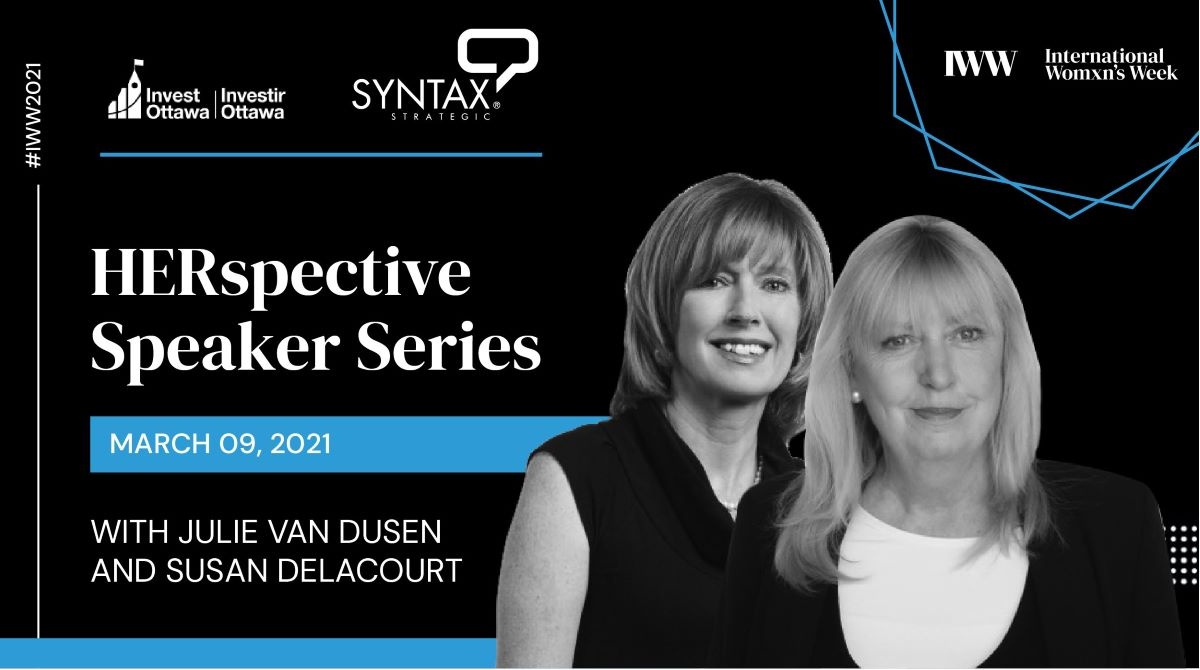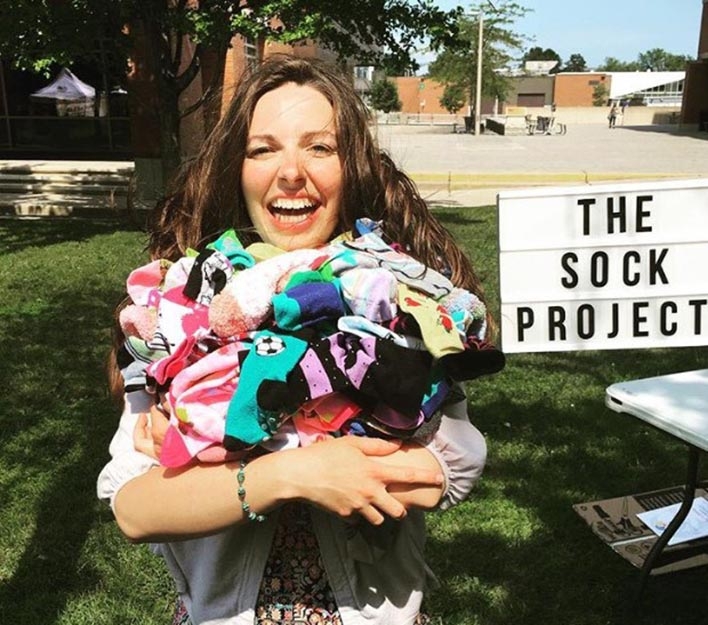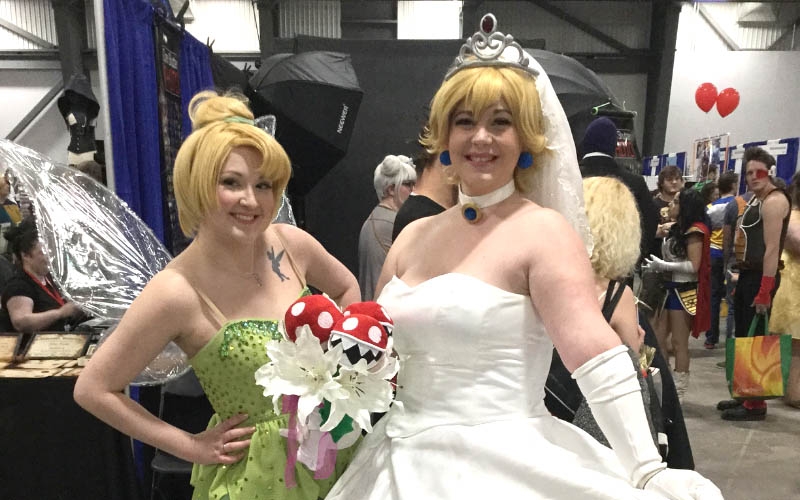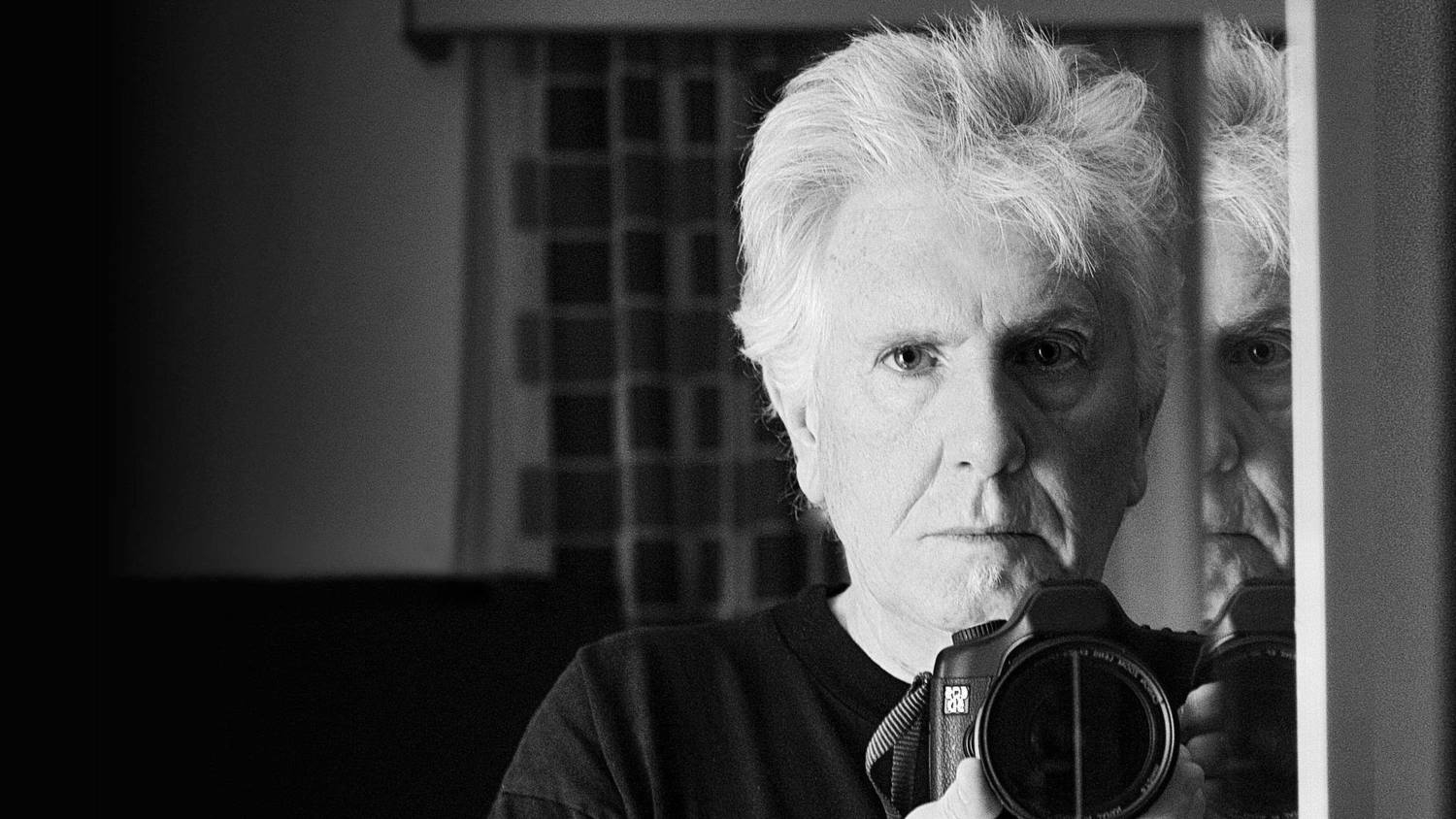
Susan Delacour, Julie Van Dusen on the world of Canadian media
Susan Delacourt and Julie Van Dusen are both well-known veterans of the world of Canadian journalism, and they are both instinctive story-tellers. In their joint interview as the fourth and final instalment of the Her-Spective webinar this instinct for narrative and truth, honed by years of experience, became very clear, very quickly.
“Lots of people think about Diefenbaker as Prime minister.” Van Dusen began, early in the interview. She was describing how she grew up, often around politicians and other people connected to her parent’s work. “Saskatchewan, bill of rights, you know.” She continued. “I think of him as the guy who killed my monkey.”
She clarifies that it was an accident: her father didn’t care to have her pet monkey crawling all over the Prime Minister, his boss, when he came over for dinner. The monkey was put outside, caught a cold, and died later.
Van Dusen connects her father’s career and growing up steeped in politics to her career as a political journalist. The hill was our playground, she said, and growing up in a loud family let her slip easily into a loud newsroom. “It’s like winning the lottery, being up there for 25, 30 years.” She said. Chasing politicians down hallways and into elevators with questions was something she was built for.
Her-Spective is a weeklong interview series with five leading female journalists, showcasing the extraordinary voices of women in Canadian media. Co-presented by Invest Ottawa and Syntax Strategic and hosted by Catherine Clark, these engaging conversations provide insight into the reality of the world of Canadian media. Delacourt and Van Dusen, interviewed together on March 9, are veterans of the industry. They spoke on their careers and how covering Canadian politics has changed over time.
Where Van Dusen was raised to be part of the political world, Delacourt had a different pathway into political journalism: “I fell into it.” She said. “I wanted to be a writer—I wanted to write novels,” but she joined the school newspaper at Western University, and was hired from there by the Globe and Mail after graduation.
Delacourt and Van Dusen both covered extraordinary stories throughout their careers. They watched Canadian politics shift under the feet of politicians and the public alike over decades of work in the industry. A highlight mentioned by both was covering the constitutional debate around the Charlottetown and Meech Lake Accords.
Van Dusen recalled standing next to history as it took place and interviewing major players as they made their moves in Quebec’s quest for independence and the nation held its breath. Delacourt marvelled at how privileged she felt to cover the constitution like that, “in those days when they really wanted you to tell stories in depth, travel, and would spend the money to do it.” She called it the “hey-day” of journalism in Canada, and perhaps it was.
Even during such a hey-day, Canadian media could be a hard place to work. But the atmosphere didn’t always contribute to competition between journalists on the Hill—often, it did the opposite. Van Dusen described the Hill for journalists as a marketplace. “[But] we don’t trade in fruits and vegetables. We trade in information.” Every journalist knew it was a difficult job, and they tended to help each other as a matter of course.
Delacourt, on the other hand, recalls specifically being “adopted” by Canadian political journalist Marjorie Nichols late in Nichol’s career but early in Delacourt’s own. “She picked up a few of us.” Delacourt said. “She’d tell us when we were being bad, when we’d missed something.” Nichols was looking out for younger women on the Hill. Delacourt, aware of how this commitment helped her career, did so for other young women on the Hill after her.
When their careers began or, as Van Dusen puts it, when they started on the Hill as toddlers, there was “one woman per Bureau” in the scrums. The reporters asking the questions and digging for the answers were mostly men. But it this ratio changed as their careers continued and now, often, these same scrums are dominated by women. “You don’t notice how much progress has been made till you see it all around you,” Delacourt said.
Another element of the growing number of female journalists in the industry is the amount of women who are also mothers and working in the media. “It’s cool to see people being mums and leading women journalists too.” Van Dusen said. Earlier, many journalists had to choose between career and family; it is now more common to do both. It is also useful. “Being a mother makes you very efficient. [It makes you] laser-like in your ability to smell out the truth.” Van Dusen said.
Even with the positive movement of women in the media industry and with such extraordinary careers and experiences under their feet, both Van Dusen and Delacourt hesitated before encouraging young women—and young people in general—to pursue a career in journalism. “The career is harder now.” Delacourt said. “The resources are more limited, the pay is not as good, the careers are not as secure… [but] I hate saying that.”
Though Van Dusen agrees, she does not think shrinking prospects should limit the careers of young journalists. “If you really want to be a reporter, go for it. If you have to ask questions, write, if that’s your passion, go for it.” She said.






